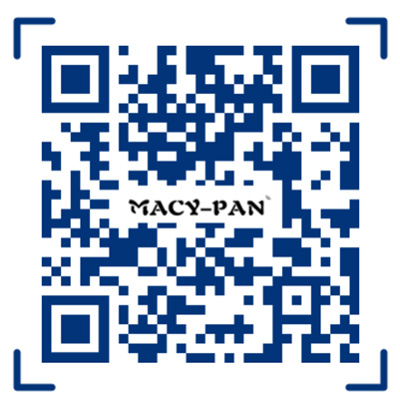Stroke
Stroke is a neurological deficit attributed to an acute focal injury of the central nervous system (CNS) caused by an injury to a blood vessel. The injury is either a blood clot in a blood vessel or a rupture of a blood vessel. The area of the brain deprived by blood flow usually has a central area of most severe damage (that often dies) that is surrounded by injured tissue with decreased blood flow and neurologic dysfunction. HBOT works on this surrounding brain tissue to salvage the tissue and restore function.
What are the effects?
Loss of a specific neurological function that is served by the brain tissue that is stroked. The most common stroke syndromes involve facial drooping, weakness or paralysis of an arm, leg, or one side of the body, slurred speech, confusion, disorientation, numbness or tingling in the face, arm, or leg, or altered level of consciousness.
Benefits from HBOT
There are a wide range of benefits, but under Dr. Harch’s care, patients generally see partial or complete reversal of the neurological deficit. The most important factor in HBOT treatment of stroke has been the proper dosing of HBOT, based on the type of stroke, and time of intervention. While the best results are derived from early application of HBOT, most patients don’t get HBOT until years after their stroke. Even in these chronic cases, which comprise the bulk of stroke patients Dr. Harch has treated over the past 29 years, patients can still experience improvement in their motor, sensory, cognitive, gait, balance, and other symptoms. One of the most comprehensive reviews of HBOT in stroke is presented by Dr. Jain in the Textbook of Hyperbaric Medicine. The net result of all studies and the treatment of over 2000 stroke patients is a beneficial effect of HBOT on all phases of stroke.
Case Study
Mr. Bennett was a 68 year old man who had experienced multiple small strokes over his lifetime, with the last stroke occurring 2.5 years before his referral for HBOT. The last stroke was the most serious. After this stroke, Mr. Bennett had intractable dizziness, poor balance, right body incoordination, poor motor control, and was walking-cane dependent. He was now housebound, afraid that he would fall in public if he ventured out with his cane and knee brace. The constellation of these symptoms caused a severe depression where he voiced suicidal thoughts, saying that he was only staying alive for his grandchildren.
Mr. Bennett underwent a SPECT scan, and the next day received a single HBOT dose followed by a repeat SPECT scan. Over the course of the next 5 months he received 80 HBOTs in two blocks, with a break in between each set of 40. During this time and after treatment, he experienced a marked decrease in his dizziness, improved balance, improved right body coordination, and better control of his left knee, such that he needed neither a cane nor knee brace. With these improvements, he resumed his previously active lifestyle, was no longer housebound, and had a marked improvement in his depression. His SPECT brain imaging showed a remarkable improvement and was responsible for his clinical improvement.
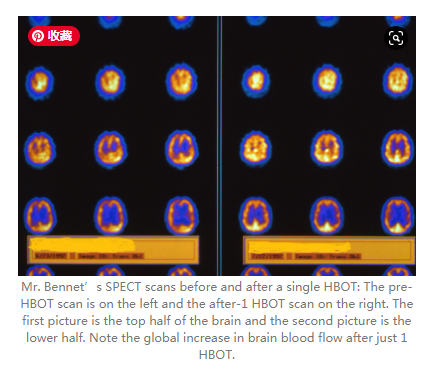
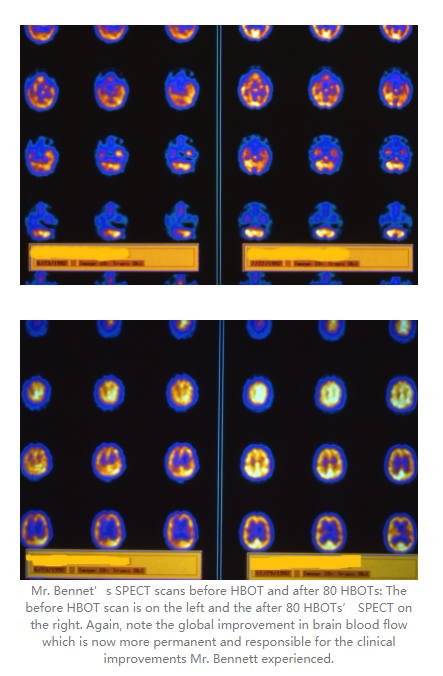
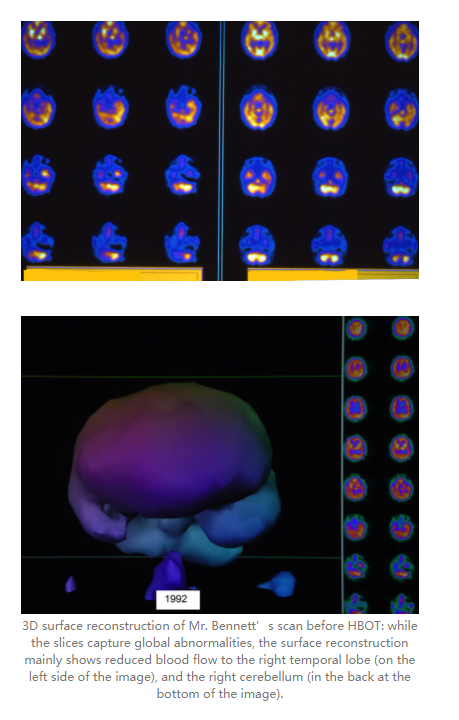
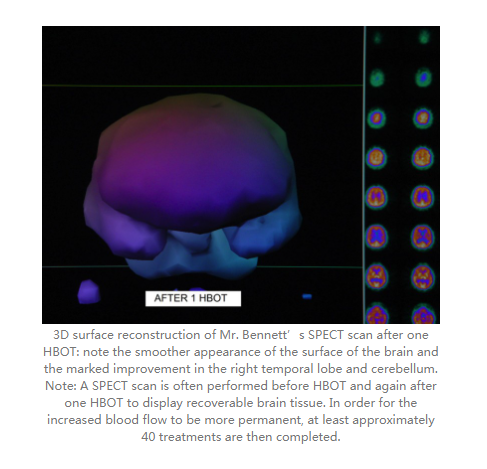

Supportive Research and Information
K.K. Jain, Role of Hyperbaric Oxygenation in the Management of Stroke,Textbook Of Hyperbaric Medicine, 6th Edition, Editor: K.K. Jain, Springer Publisher, Cham, Switzerland, 2017. (can purchase individual chapter at: https://www.springer.com/us/book/9783319471389#
https://www-ncbi-nlm-nih-gov.ezproxy.lsuhsc.edu/pubmed/1968553 (One of the most dramatic cases of HBOT in chronic stroke that suggested the concept that injured (stroked) brain tissue could exist in an idling state for 14 years and was able to be re-activated. Published by Dr. Richard Neubauer, Dr. Harch’s mentor).
https://www-ncbi-nlm-nih-gov.ezproxy.lsuhsc.edu/pubmed/7394869 (An early review of 122 stroke cases treated by Dr. Neubauer).



 +86 13621894001
+86 13621894001
 rank@macy-pan.com
rank@macy-pan.com
 +86-+8613621894001
+86-+8613621894001


 Tel:
Tel: Mob:
Mob: WhatsApp:
WhatsApp: Email:
Email: Add:Bldg 15, No.889 Guinan Road, Songjiang District, Shanghai, China
Add:Bldg 15, No.889 Guinan Road, Songjiang District, Shanghai, China